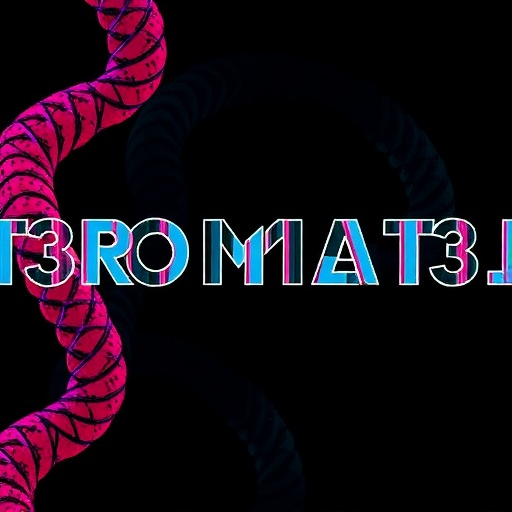In a groundbreaking study published in Nature, researchers have unveiled a novel mechanism underlying the compartmentalization of chromatin in mammalian cells, a process central to genome organization and gene regulation. The eukaryotic genome is intricately divided into euchromatin and heterochromatin, with the latter playing a crucial role in maintaining genome stability and regulating gene expression. Until now, the molecular pathways driving heterochromatin reassembly during cell division remained incompletely understood, especially in mammalian systems.
The formation of heterochromatin has long been associated with histone modifications, particularly methylation at histone H3 lysine 9 (H3K9me3). This modification is catalyzed by enzymes of the SUV39H family, which “write” this mark and also recognize it, promoting a self-reinforcing mechanism that facilitates heterochromatin propagation through cell cycles. While previous studies elucidated a pathway involving the homologue of SUV39H in fission yeast—Clr4—which operates alongside a ubiquitin ligase Cul4 to mono-ubiquitinate histone H3 at lysine 14 (H3K14ub), the relevance of such a pathway in mammalian cells was unknown.
The research team discovered that the E3 ubiquitin ligase G2E3 specifically targets H3K14 for mono-ubiquitination within pericentromeric heterochromatin in mammalian cells. This modification, H3K14ub, emerged as a critical prerequisite for the subsequent trimethylation of H3K9 by SUV39H. G2E3’s enzymatic activity was shown to be indispensable for the proper spatial organization of SUV39H and the establishment of H3K9me3 marks, ensuring robust heterochromatin formation at pericentromeric domains.
Interestingly, G2E3 expression is tightly regulated and peaks during the G2/M phases of the cell cycle. During mitosis, G2E3 localizes to mitotic chromosomes in an RNA-dependent manner, catalyzing H3K14ub and setting the stage for sequential recruitment of SUV39H and heterochromatin protein 1 (HP1). This temporal regulation couples cell cycle progression with heterochromatin assembly, offering insights into how chromatin states are faithfully maintained through mitosis.
The molecular interplay between these histone modifications is further accentuated by the discovery that the SUV39H chromodomain acts as a sophisticated reader that recognizes a dual modification signature composed of both H3K9me3 and H3K14ub. This dual recognition mechanism is crucial for SUV39H’s proper compartmentalization within pericentromeric heterochromatin, highlighting a previously unappreciated complexity in histone code interpretation.
Loss of G2E3 disrupts this precisely orchestrated process, as demonstrated by the aberrant diffusion of SUV39H and H3K9me3 signals into euchromatin regions. This mislocalization results in abnormal heterochromatin spreading, leading to widespread transcriptional repression and impaired euchromatin compartmentalization. These findings underscore the essential role of G2E3-mediated H3K14 ubiquitination in preserving chromatin landscape fidelity and genome function.
The study’s comprehensive mechanistic model also clarifies how H3K14ub acts as a linchpin modification, augmenting SUV39H’s histone methyltransferase activity. This functional synergy ensures that heterochromatin formation is tightly controlled not merely by the presence of H3K9me3 but by its coordination with H3K14ub. Thus, the cell integrates multiple histone modifications to establish a robust epigenetic state.
Moreover, the identification of G2E3’s role in heterochromatin assembly spotlights a potentially conserved pathway from yeast to mammals. The parallels between Cul4 in yeast Clr4 complexes and mammalian G2E3 suggest evolutionary conservation in the ubiquitination-mark-facilitated recruitment of histone methyltransferases during chromatin partitioning.
Crucially, the revealed mechanism also has pervasive implications in transcriptional regulation. By restricting SUV39H and heterochromatic marks to pericentromeric regions, G2E3 preserves euchromatin integrity, permitting transcriptional activity where appropriate. Disruption of this balance may contribute to epigenetic dysregulation observed in diseases, including cancer.
This study opens new avenues for exploring how histone ubiquitination modulates chromatin states and may inspire strategies targeting epigenetic writers and readers in therapeutic contexts. The detailed characterization of G2E3 as an E3 ligase for H3K14 ubiquitination provides a valuable molecular handle for future investigations into chromatin biology.
In summary, the researchers have elucidated a conserved and critical histone modification crosstalk involving H3K14 ubiquitination and H3K9 trimethylation, orchestrated by G2E3 and SUV39H, which together govern the compartmentalization and functional maintenance of heterochromatin. This insight drastically advances our understanding of epigenetic inheritance and chromatin organization in mammalian cells, with broad implications for cellular physiology and disease.
Subject of Research:
Chromatin biology; epigenetic regulation; histone modifications; heterochromatin formation; cell cycle-dependent chromatin reassembly.
Article Title:
A conserved H3K14ub-driven H3K9me3 for chromatin compartmentalization.
Article References:
Huang, Y., Sun, Y., Qi, H. et al. A conserved H3K14ub-driven H3K9me3 for chromatin compartmentalization. Nature (2025). https://doi.org/10.1038/s41586-025-09624-5
Image Credits: AI Generated




